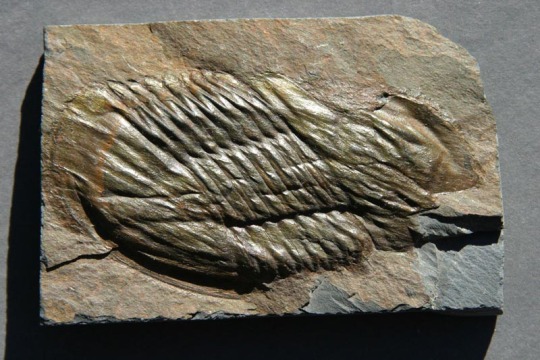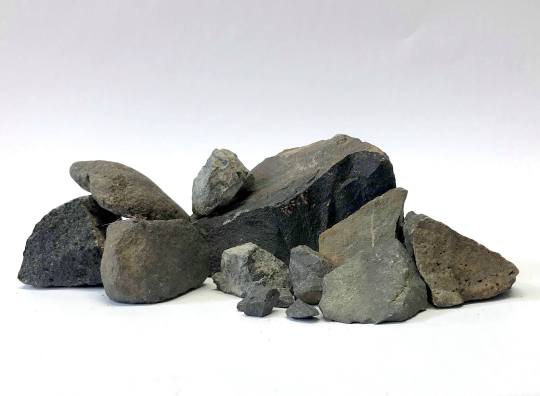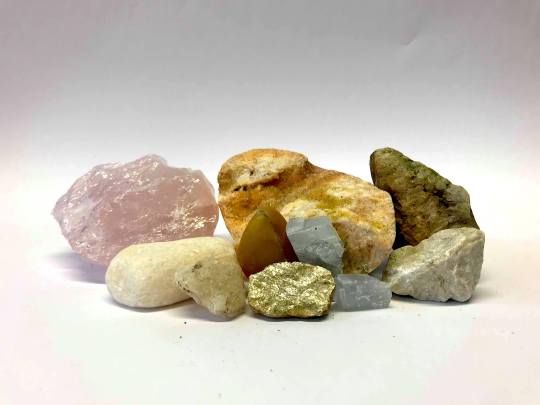#rockcycle
Explore tagged Tumblr posts
Text
Minerals and Rocks Simplified - Static Geography Series
youtube
Minerals and rocks form the very foundation of Earth's crust—and they’re also a vital topic in UPSC Geography. Learn their classifications, formation processes, and distinctions in a simplified and exam-oriented manner. Boost your basics and score better in Prelims and Mains with ZenStudy’s easy-to-digest lessons. Let’s make physical geography scoring!
🌐 Website: https://zenstudy.in/
📲 Instagram: https://www.instagram.com/zenstudyz/
👍 Facebook: https://www.facebook.com/profile.php?id=61555473406607
▶️ YouTube: https://www.youtube.com/@Zenstudyz
�� Telegram: https://t.me/Zenstudyltd
🐦 Twitter: https://twitter.com/ZenStudy_in
💼 LinkedIn: https://www.linkedin.com/company/zenstudy/
#mineralsandrocks#upscgeography#rocktypes#igneousrocks#sedimentaryrocks#metamorphicrocks#upscprelims#geographybasics#earthscience#staticgs#geographyforupsc#iasprep#upscaspirants#ncertgeography#upscsimplified#geographynotes#competitiveexam#civilservicesexam#rockformation#learngeography#upscmotivation#zenstudy#upsc2025#upscfoundationbatch#geographyquiz#geographyfacts#studywithzenstudy#onlineclassesupsc#rockcycle#physicalgeography
0 notes
Photo

Rock cycles and volcanoes has been the topic the last week around here. We have 2 1/2 days drop off option. Do you need to work part time and you work from home and need an extra time to focus? We've got fun and lessons and youre welcome to join #montessorischool #waldorf #nature #naturebasedlearning #gardens #montessori #education #rhodeisland #children #hybridteaching #outdoorfun #students #homeschool #privateschool #learning #waldorfschool #rockcycle #volcano https://www.instagram.com/p/CWV5YQ5LSVW/?utm_medium=tumblr
#montessorischool#waldorf#nature#naturebasedlearning#gardens#montessori#education#rhodeisland#children#hybridteaching#outdoorfun#students#homeschool#privateschool#learning#waldorfschool#rockcycle#volcano
1 note
·
View note
Photo

0 notes
Photo

Rock cycle poster! Because we have to have some fun while revising :') #geology #rockcycle #igneousrocks #sedimentaryrock #metamorphicrock #revision #exam #university #study #environmentalscience #revisonposters https://www.instagram.com/p/BuqqeKsgRiz/?utm_source=ig_tumblr_share&igshid=1nhds5mgbc0s0
#geology#rockcycle#igneousrocks#sedimentaryrock#metamorphicrock#revision#exam#university#study#environmentalscience#revisonposters
0 notes
Photo

Stressed out trilobite This trilobite probably feels like an awful lot of us these days. It started off in its normal shape, discarded onto the ocean floor as the organism shed it. That little trilobite shell found its way into sediment and eventually became part of a rock. But then, something happened to that rock – it was put under stress, from the old sedimentary layer being pulled into a mountain building event. The stress was gentle enough that the rock didn’t break, but it was strong enough and lasted long enough that the rock started to gradually shift its shape. Our once normal looking trilobite began shearing and twisting under the strain, bending to the side and eventually taking the shape seen here.
Geologists who find objects like the can find them quite useful – we know what the shape of the trilobite used to be based on undeformed trilobites, so we can estimate how much the rock has been deformed using this fossil. Other objects, such as clasts in conglomerate rocks, can be used similarly. However, if a rock is taken to too stressful of conditions, such as medium to high grade metamorphism, fossils like these would instead be destroyed and recrystallized. -JBB Image credit: Marli Miller (CC licensed/Noncommercial) https://i1.wp.com/geologypics.com/wp-content/uploads/2017/04/SrD-53.jpg?ssl=1 Read more: https://www.tandfonline.com/doi/pdf/10.1080/00288306.1990.10425690 https://www.geolsoc.org.uk/ks3/webdav/site/GSL/shared/pdfs/education%20and%20careers/RockCycle/Deformed%20Fossils%20Experiment.pdf
#Stress#strain#trilobite#shear#geology#fossil#fossils#rock#deformation#mountain#sediment#trilobitetuesday#the earth story
84 notes
·
View notes
Photo

The rock cycle is the constant transition of the world's rocks due to erosion, heat, and pressure. As rocks wear away, melt, and freeze, they transition between the three major rock types: Igneous, Sedimentary, and Metamorphic. #earthmounds #geology #art #rocks #rockcycle
0 notes
Photo

#cse • @mrosette1 This past month has been very busy! I am very fortunate to have met @charlie_rock_2545 last year. He’s a stand up guy and a good friend. I can’t thank him enough for all the business. He builds top notch bikes. Everything is always dialed when he drops it off to me. Fuel pressure, oil pressure, tire pressure you name it, he makes sure it’s right. Your quality of work speaks for itself bud. Thank you again. Go check out his page. #rockcycles #performancebagger #harley #roadglide #harleydavidson #hd #bassanixhaust #danddexhaust #bagger #savage #hogtits #lethereat http://bit.ly/2IibQ5Y
1 note
·
View note
Photo

From Earth Science Picture of the Day; September 16, 2018:
Archive - Shiprock, New Mexico Photographer and Summary Author: Dr. Jack B. Share
Each Sunday we present a notable item from our archives. This EPOD was originally published September 15, 2012.
Shiprock gives the impression of having been volcanically thrust out from the sands of the Mancos desert, but this isn't the case. Shiprock is indeed a volcano but of a class called a diatreme, having formed explosively from gas-charged magma escaping at great velocity. It possessed a crater at the surface called a maar, but erosion has long since removed it along with much of the sedimentary strata through which it erupted. What we see now is the solidified plumbing that remains called a neck and its system of magma-radiating conduits called dikes. Thus, Shiprock is a partially-exhumed, erosionally-sculpted diatreme.
The entire Shiprock volcanic complex emplaced between 28 and 19 million years ago during the Late Oligocene to Early Miocene. Its maar crater is estimated to have been located 3,250 ft (991 m) above the present day land surface of the Mancos Shale. That means Shiprock erupted through most, if not all, of the Late Cretaceous Western Interior Seaway’s sandstones and shales as well as some overlying Tertiary sandstones. The tectonic forces that created the uplift of the Colorado Plateau were likely responsible for the diatreme’s placement within the Navajo Volcanic Field and its subsequent exhumation and erosion. Photo taken on July 5, 2012.
Photo Details: Camera Maker: Canon; Camera Model: Canon EOS 7D; Focal Length: 69.0mm; Aperture: f/8.0; Exposure Time: 0.0040 s (1/250); ISO equiv: 100; Software: Adobe Photoshop Elements 5.0 Windows.
Shiprock, New Mexico Coordinates: 36.6875, -108.836389
Related Links
Shiprock
Geology of the Colorado Plateau
Jack's Website
Student Links
A Field Trip to Maar Volcanoes
Create Sedimentary Strata
Earth Observatory
Shiprock Formation, New Mexico
#earth science picture of the day#nature#landscape#geology#volcano#erosion#diatreme#monadnock#Shiprock#New Mexico#Navajo Nation#long post
5 notes
·
View notes
Text
Taxonomy of Stoniness
In trying to classify a collection of rocks, we had plenty of options. We could sort them by colour, or by the processes that formed them. We chose to organise them instead by how they felt to the touch. We found that visually these rocks weren’t particularly synonymous, so perhaps a second attempt at categorisation could take that into account.
To start off, we separated the rocks into two piles - heavy versus light.
This gives us our first category - porous rocks. This category varies from pumice to scoria, and a piece of basalt (dark, centre) with huge air bubbles formed which was larger, but also lighter, than the rest. Apparently, while basalt and scoria/pumice are formed differently - basalt is from flowing lava and scoria/pumice are from lava froth with bubbles of differing sizes - basalt can have the appearance of scoria if the lava it came from was full of bubbles, so not froth but bubbly lava (apparently they are different).
Within this category, the rocks could potentially be divided further into rocks that were smooth or rough, though the nature of the smoothness of the “smooth” stones here is different from the smooth heavy stones. It’s a rougher kind of smooth - doesn’t hurt to grip hard but is kind of like sandpaper.
Fun fact: scoria is typically used as a drainage material as its porosity means that water passes through it easily. It wouldn’t be great for building a wall. It also isn’t great in concrete because it’s very crumbly and so doesn’t give strength to the concrete (which is the purpose of an aggregate).

Because we had so many heavy stones left over, we further divided these into 3 categories and then a bonus group. These distinctions were made by how the stones felt in terms of roughness, caused by the course-ness of the grain, and also the natural weathering that the rocks had endured. We thought that this weathering would perhaps indicate the finish that the stone may yield when worked, again related to the grain and how that might appear when smooth.
First the rough stones. This was two pieces of basalt from the Auckland lava fields, which had a very thick grain and were uncomfortable to the touch - they were kind of spiky and like a much harsher sandpaper than the ones described above. They were extremely heavy, indicating a high density.

The next pile is all Andesite (known because they were collected in part from the Waitakere Ranges and the Coromandel Peninsula, which are lava fields of Andesite). These ones were smoother than the basalt, but still very sharp edged. The grain seemed finer, which is what made them smoother on their flat sides.

The smoothest hard rocks that we compiled are all riverbed stones, which is what has smoothed them down. The white ones are probably smoothed quartz (but didn’t get placed in the pretty rock pile because they weren’t shiny or sparkly, we had to be selective). The one with dark patches is metamorphic rock, so the dark bits are a harder rock that has metamorphosed with a softer rock that filled in the gaps around it, and then they were smoothed at al equal rate.

Our final category was pretty rocks! We found them difficult to place these within the other hard rock categories (as they are all hard rocks) because it was clear that visually they all fitted together. Upon further investigation, it turns out that these are all metamorphic rock, which is the process that allows for the formation of crystals, hence pretty shiny-ness. Here we had some quartz (from some large chunks of quartz that could even be low-grade amethyst, to some crystals attached to a rock, to a quartz vein), a piece of what is probably citrine, some sparkly white rock which might be marble and a piece of schist (shiny gold one).

Our classification in terms of the roughness of the hard rocks are probably completely pointless, as there is so much opportunity for variation even within something that can be classified as the same time of rock. For instance, basalt can be as above - rough and heavy, or it can be smoother like Andesite, polished nicely, or extremely porous and filled with air bubbles (again as above).
It comes back to our discussion and inability to make a decision over what type of rock to choose in that situation. How do you pick a type of rock for a particularly purpose on more that just the look of it and how that particular sample feels? Because that’s what it feels like we have to go off. While you can research and get history and locations of rocks, the characteristics are difficult to define as they lie on such a broad spectrum.
All my research about what on Earth we were playing with came from these sources:
My dad.
https://flexiblelearning.auckland.ac.nz/rocks_minerals/rocks/schist.html
https://geology.com/rocks/metamorphic-rocks.shtml
https://www.learner.org/interactives/rockcycle/types.html
https://www.energymuse.com/citrine-stone.html
https://www.thoughtco.com/rock-identification-tables-1441174
https://flexiblelearning.auckland.ac.nz/rocks_minerals/rocks/andesite.html
0 notes
Photo

*** coming soon** The crystal journey This pretty little childrens picture book is all about the rock cycle. Designed for pre or emerging readers its born from our passion about rocks and the natural world -- and our Waldorf life. A Few tweaks then this beauty will be in our shop (link in the bio) #waldorffamily #stephaniegreen #graphicdesign #illustratorsofinstagram #rockcycle #geologists #geologyrocks #geologistsofinstagram #geologylife #geologynerd #womeninscience #stemeducation #steam
0 notes
Text
2/22/17: RockCycled
No shame, tonight I went to a spin class, and I loved that shit.
It was a place a friend from Northwestern had recommended us, and me, Jamie and Sabrina decided to get our sweat going.
For anyone who doesn’t know, a spin class is when you’re in a room full of stationary bikes and a peppy, way-more-athletic-than-you’ll-ever-be trainer is on a bike facing you at the front of the room, motivating you with pop songs and cheesy one-liners through their microphone headset.
But this was no ordinary spin class. We got to RockCycle, and they gave us these special shoes with metal on the bottom that we strapped on like rock climbing shoes, if you’ve ever worn those. We walked into a dimly lit room, lines of bikes facing a full-wall mirror and an elevated platform where the trainer’s bike throne sat, surrounded by glowing orange candles. When we got on our bikes, the metal on the bottom stuck to a super-magnet on the pedals, rooting us in place and making me feel like they were about to shoot a bunch of data through my heels and into my brain so I could be uploaded to the grid.
The class started with Michael Jackson’s “Black or White” setting the pace for our soon-to-be-screaming thighs, and things only went up from there. We did handlebar pushups to “Temperature” by Sean Paul, lifted dumbbells to “Shake (Mentirosa)” by Ying Yang Twins ft. Pitbull, and burned out to “Titanium” by David Guetta. And my arms and hips and quads broke down, fiber by fiber, the adrenaline levels just kept climbing. I hooted, I sang along to songs, and I even made eye contact with the buff trainer guys and smiled as we both shimmied to the beats.
The key was the fact that it was dark. Even for me, as someone who usually pushes myself to not give a shit about what others think, being invisible allowed me to really go hard with abandon. When I headbanged or danced, I didn’t have to worry about anyone judging me on the bike next door. And honestly, I feel like I have my best workouts when I stop thinking and just get in the frenzy zone, not thinking about anything except pushing myself to the limit.
It’s a beautiful thing to just be liberated. Who knew it’d happen at spin class?
<3Escoot
Palabras Nuevas
· Ahorrista-person who saves money
· Payador-folk singer
· Cartel-poster
· Figurar-to appear, to be listed
· Engaño-a trick
· Atrasar-to delay
· Fallar- to rule (judicial)
1 note
·
View note
Text
Rockwool ouvre Rockcycle à la Façade, le service exclusif de recyclage des déchets de chantier
L'industrie doit trouver des solutions pour limiter son empreinte environnementale et améliorer la circularité de ses produits. ROCKWOOL, fabricant de solutions d'isolation en laine de roche fortifie son service ROCKCYCLE, un programme national dédié au tri et à la récupération des déchets de chantier.
Article : https://feeds.feedblitz.com/~/600959400/0/isolationcomblesperdus
0 notes
Text
La nueva colección Stella Sport by Adidas se suma al estilo urbano
Se presentó la nueva colección de #StellaSport by Adidas con un evento muy fit e invitadas de lujo: Pame Stupia de @fdoficial, Manu Viale, Flor Fernandez @thehealthyblogger entre otras. Pedalear fue la consigna y para eso en Rockcycle son expertos. La invitación incluía make up y peinados. Todas se lookearon antes de la actividad. Las trenzas y los detalles flúo fueron los más pedidos. Las…
View On WordPress
0 notes
Text
Recycled asphalt millings
Finished Driveway…… RockCycle Asphalt Millings Co.
The post Recycled asphalt millings appeared first on Tropical Asphalt.
0 notes
Photo

Lithosphere, Tiger's Eye, and Basalt! Oh my! #earthmounds #geology #rockhound #minerals #rocks #rockcycle #learning #education #stones #learn #english #teaching #geologist #RocksandMinerals #learningisfun #language #growing #studying #knowledge #study #students
0 notes
